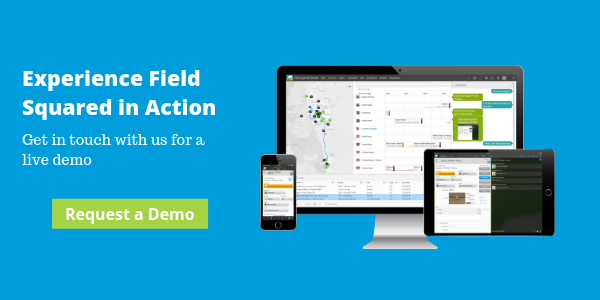
Here at Field Squared, we feel it’s necessary to establishing a solid field service management strategy. Since this is a fundamental aspect of every conversation we have with field service organizations, we thought it’s a great time to detail what makes automated route optimization a powerful solution to help decrease operational costs and increase efficiency.
What is Route Optimization?
I typically start by discussing the general concept of what it means to optimize field service routes. In the case of our customers, the conversation begins with an overall understanding of what their field workforce does on a daily, weekly, quarterly or even semi-annual basis. While it may seem like semi-annual work orders are future concerns, we have a number of customers that require the need to plan months in advance. They may further require the ability to plan projects with multiple teams across different locations.
Leveraging an Automated Field Schedule Route Planner
With such cases, any slip in the schedule can delay completion or other related work. This is where automation comes into play. An automated field service route planner is a great way to allow the system to plan out schedules in the most efficient way possible. The key to an automated system optimizing routes is taking real-time and historical traffic information into consideration. At least in the case of our route optimization capabilities, the planner will return a route that minimizes drive time, while allowing as many tasks as possible throughout the work day.
Let’s take a very simplistic example. Glenn has a work order on his schedule at 10:00 a.m. on Tuesday. The time cannot be changed, however other work orders need to fit into Glenn’s schedule in the most efficient way possible. As a dispatcher, a route optimization planner allows the dispatcher to add additional work orders to Glenn’s schedule, and either allows the reordering of those work orders, or asks the route planner to create other work orders around his schedule.
Direct and Indirect Benefits of Route Optimization on Field Service Operations
There are a number of direct, as well as indirect, benefits to optimizing routes. Along with gains in field workforce efficiency—on both a team and individual basis—there is the added benefit of significant fuel savings. Commodity prices will continue to be unpredictable, so any incremental or significant optimization to routes that can be accomplished will ultimately result in reduced fuel consumption and overall costs.
Another indirect benefit to optimizing your field service routes is the ability to view the field workforce in real-time on a map. Making scheduling changes in real-time as work orders are completed, rescheduled or cancelled, means you can easily see and assign the nearest technician. In the end, the customer experience is improved if they were also sent a status notification to the schedule delay or change.
At the end of the day, the question really becomes why wouldn’t an organization that focuses on field service—inherently maintaining a distributed, mobile workforce— choose not to optimize their routes? Of course, it should also be pointed out that not all field service management solutions have these capabilities. It may be possible to schedule work orders, but the added capabilities of optimizing and automating routes are unique, so they’re not always available except in a unified solution. You can read more about how Field Squared covers all the bases with our scheduling, dispatch and route optimization capabilities.

Image Source: Unsplash, Ishan “See from the Sky”



